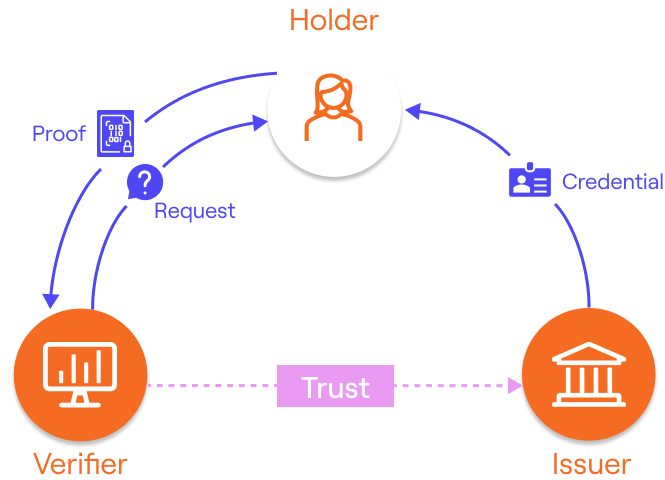The basics
What do we mean by Identity?
An identity can be a person, a company, an organization, an entity, or a government. Identity can even be a thing: a chair, a room, a bot, and so on. When we talk about identities, we are referring to "identities as accounts".
What is a claim?
An Identity can provide a claim. You can think of a claim as a statement: something an Identity is saying.
Most of the time, these statements refer to other identities. In other words, claims usually create relations between identities.
For example, when a university (identity) says that a student (identity) has a degree, this is a statement (claim) about the student. In this case, this statement creates a relation between the two identities, the student (also referred as Holder) and the university (also referred as Issuer).
What are the agents in this process?
- Issuer: An identity who makes a claim.
- Holder: An identity who receives a claim.
- Verifier: An identity who verifies if the content of a claim is issued by a specific identity and held by another specific identity.

And therefore, what is a Verifiable Credential?
A Verifiable Credential (VC) is the set of data that represents the statement made from an Issuer to a Holder and information needed to make this statement verifiable.
It usually contains:
- Information to identify the Issuer
- Information to identify the Holder
- The credential type or schema
- The attributes or properties being asserted by the Issuer
- Evidences that can be used to verify the integrity and/or authenticity of the credential
- Other information such as validity period, terms, ...